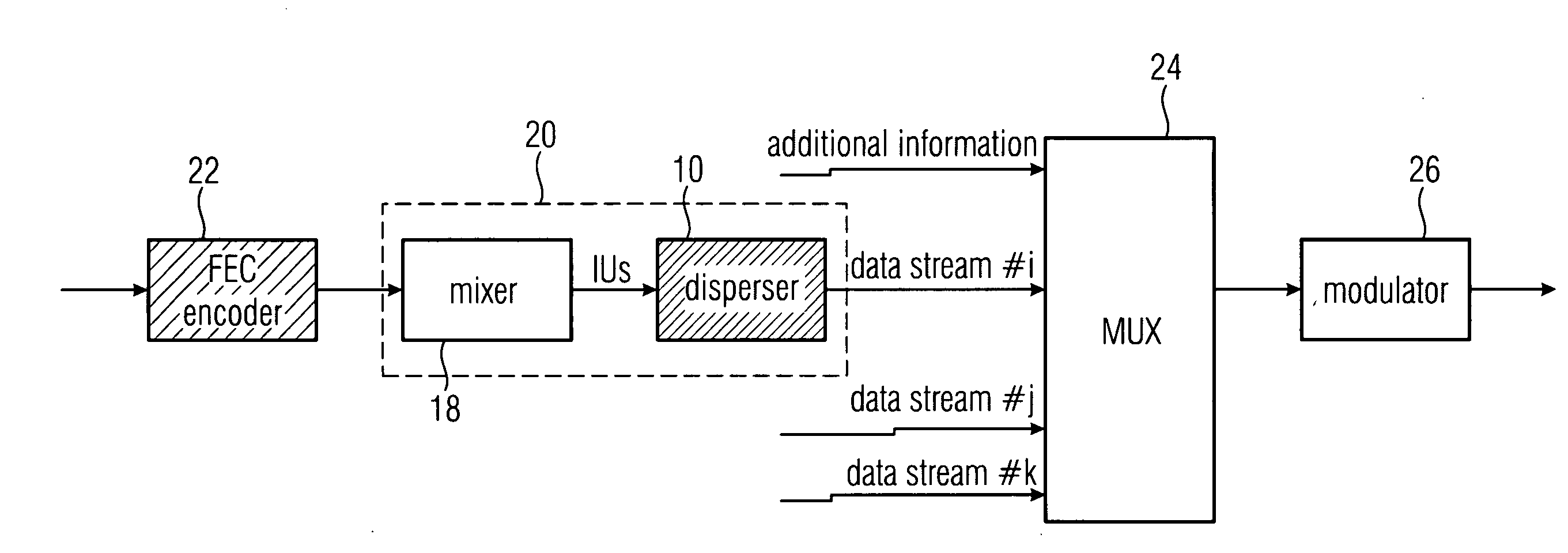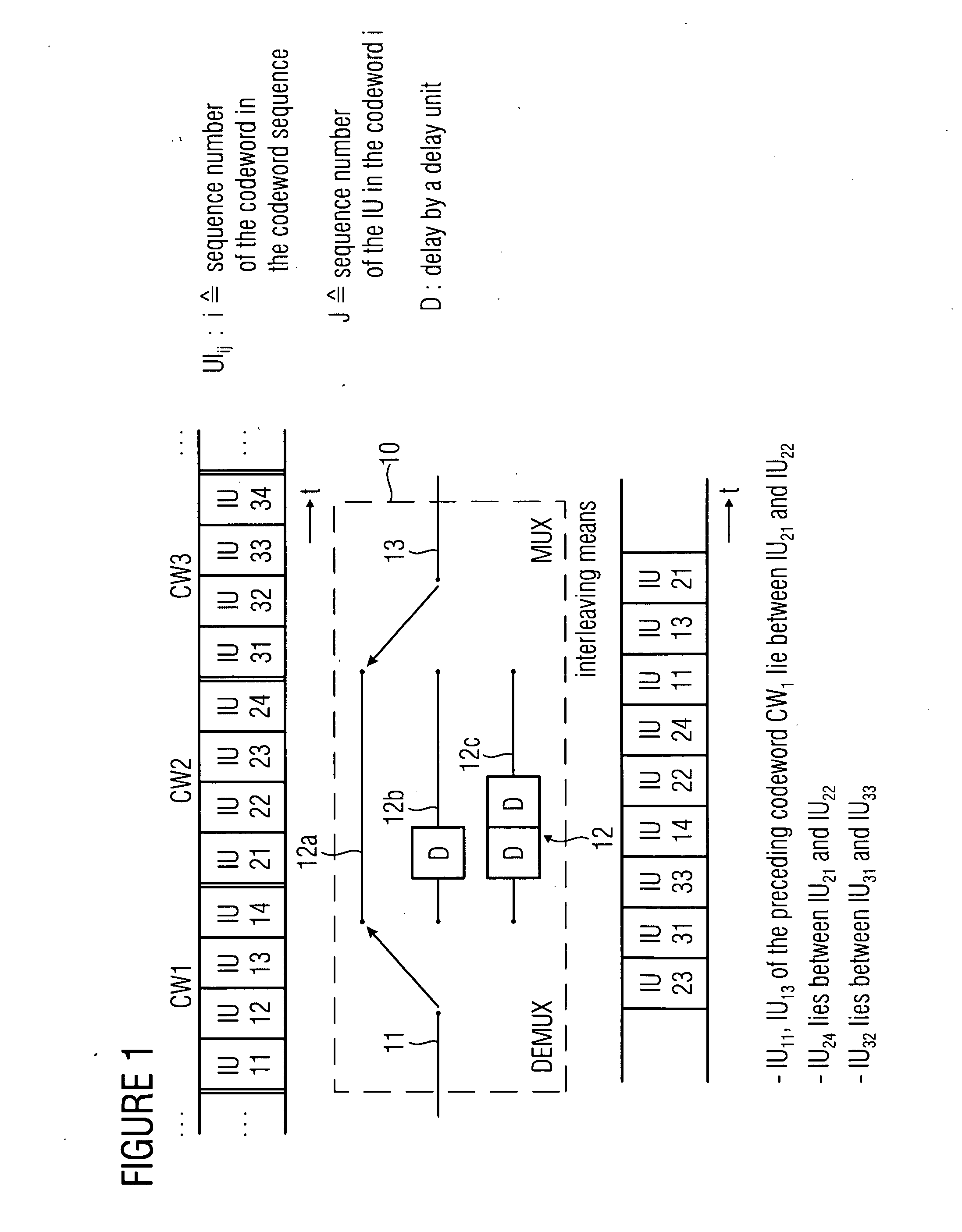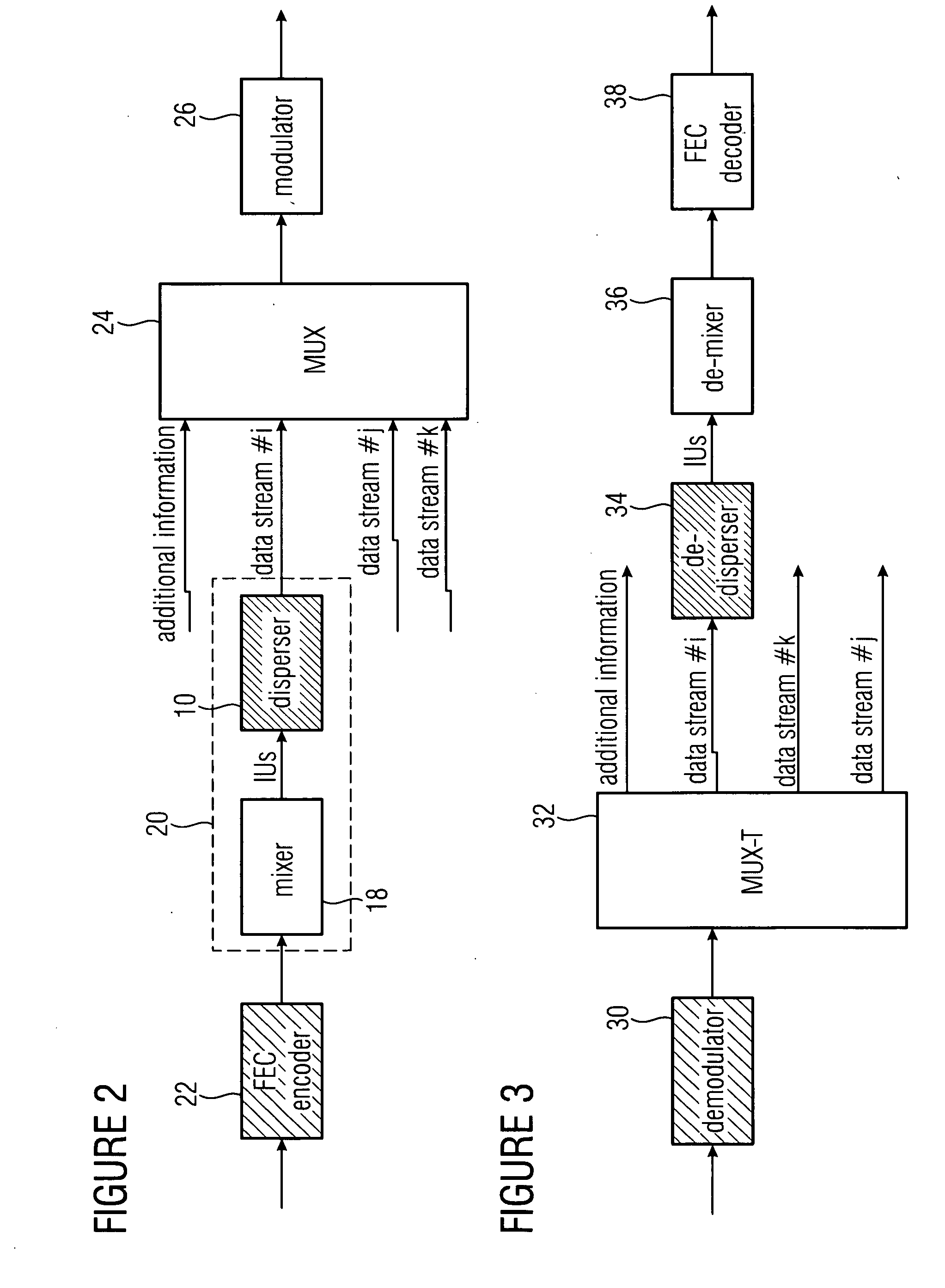Interleaver apparatus and receiver for a signal generated by the interleaver apparatus
a technology of interleaver and receiver, which is applied in the direction of forward error control, redundant data error correction, coding, etc., can solve the problems of low signal quality, low signal quality, and high probability of code symbols being faulty with higher probability, so as to reduce receiver cost, improve signal quality, and read out especially efficiently
- Summary
- Abstract
- Description
- Claims
- Application Information
AI Technical Summary
Benefits of technology
Problems solved by technology
Method used
Image
Examples
Embodiment Construction
[0067]Before explaining the individual figures in detail, at first special advantages of the interleaver apparatus, as will be described on the basis of FIG. 1, will be illustrated. Particularly in the case of long convolution interleavers, the present invention allows for efficient realization, which obtains its particular advantages not only in itself, but also in combination with special decoder strategies.
[0068]The goal of the invention is an interleaver structure allowing for efficient realization particularly in very long time interleavers. The structure is advantageous in connection with the decoder strategies.
[0069]The decoder strategies may be subdivided into the following groups
Without Channel State Information
[0070]Errors have to be recognized and corrected without additional information
Soft Decoding
[0071]The probability of a transmission error may be estimated for each bit or symbol.
Erasure Decoding
[0072]It is known that no symbol has been received. This form may be seen...
PUM
 Login to View More
Login to View More Abstract
Description
Claims
Application Information
 Login to View More
Login to View More - R&D
- Intellectual Property
- Life Sciences
- Materials
- Tech Scout
- Unparalleled Data Quality
- Higher Quality Content
- 60% Fewer Hallucinations
Browse by: Latest US Patents, China's latest patents, Technical Efficacy Thesaurus, Application Domain, Technology Topic, Popular Technical Reports.
© 2025 PatSnap. All rights reserved.Legal|Privacy policy|Modern Slavery Act Transparency Statement|Sitemap|About US| Contact US: help@patsnap.com



